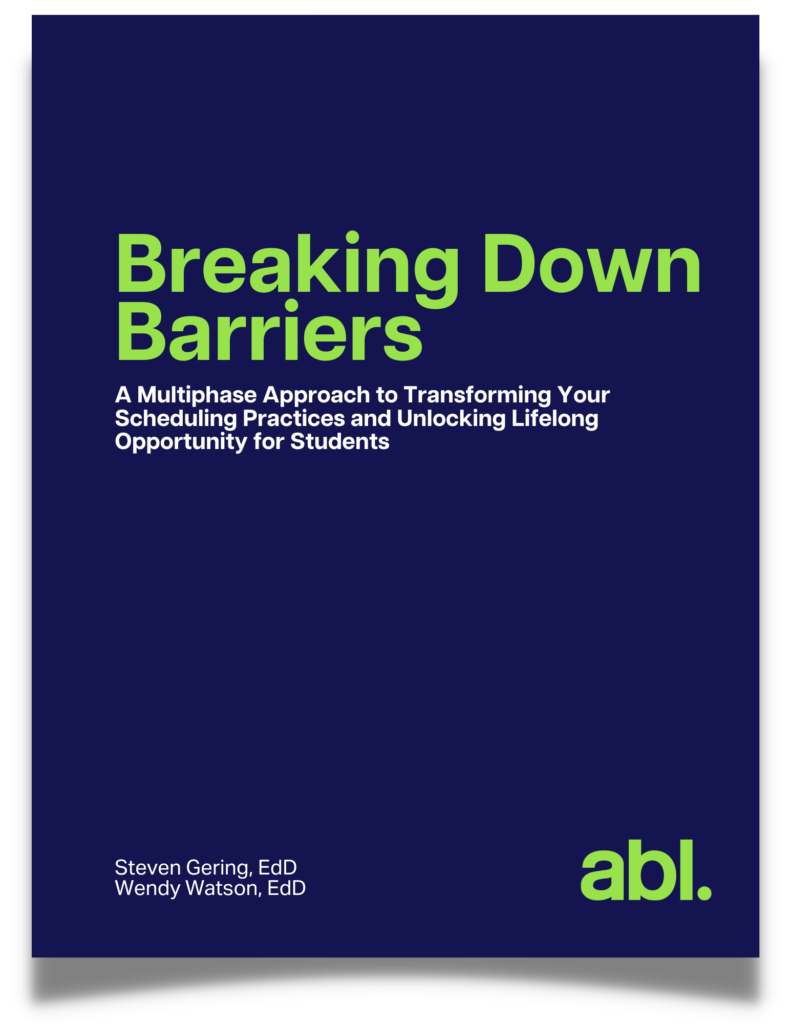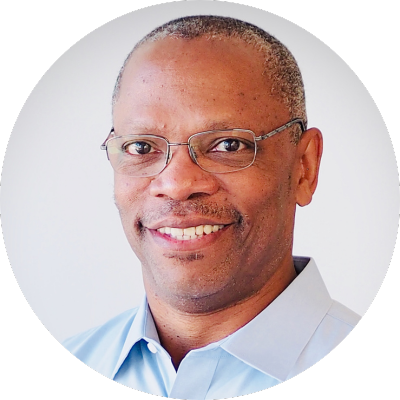Breaking Down Barriers
A Multiphase Approach to Transforming Your Scheduling Practices and Unlocking Lifelong Opportunity for Students
Steven Gering, EdD and Wendy Watson, EdD
For education leaders poised for change, our in-depth guide to strategic scheduling is your roadmap to a scheduling revolution. Learn how to use scheduling as a dynamic tool to reshape student possibilities, creating a more impactful and fulfilling learning experience.
Ready is reachable.
Start your journey now.
Prefer to read on the go?
Download the eBook version of Breaking Down Barriers today!

Download Breaking Down Barriers
For education leaders poised for change, our in-depth guide to strategic scheduling is your roadmap to a scheduling revolution. Learn how to use scheduling as a dynamic tool to reshape student possibilities, creating a more impactful and fulfilling learning experience.
Ready is reachable.
Start your journey now.
For education leaders poised for change, our in-depth guide to strategic scheduling is your roadmap to a scheduling revolution. Learn how to use scheduling as a dynamic tool to reshape student possibilities, creating a more impactful and fulfilling learning experience.
Ready is reachable.
Start your journey now.
Prefer to read on the go? Download our eBook version of Breaking Down Barriers today!
Download Breaking Down Barriers

The impact of the high school courses you take is profound. By the age of 26, individuals who complete a college degree are earning 44% more than those who did not attend college. However, 24% of undergraduates drop out within the first 12 months, nearly a third of which report poor academic performance as the reason for not returning. This impact isn’t isolated to college goers. For students who enter the workforce immediately after graduation, those who have taken advanced math and science courses are nearly twice as likely to secure full-time employment by the age of 26 than those who did not. These disparities are too important to ignore.
Read more
My years in the American public education system did not set me up for success in college.
Despite what seemed like a successful K-12 journey with high grades and promises of a bright future, when I arrived at college I was shocked to discover that I was woefully behind my peers and the red marks on my English papers had me questioning what exactly I had learned in high school.
I felt defeated, frustrated, and angry. How could I have fallen so far and so fast? I had made straight A’s in high school – which I took as a sign that I was doing everything right. But as it turned out, I was acing the wrong courses.
For my resource-strapped school, a quick glance at my grades allowed them to say “Howard is doing great – nothing to focus on here!” So when my high school didn’t place me in an advanced English class – whether because of scheduling conflicts, like my basketball practice, or because I chose a different class so that I could be with my friends – there was no way for the school to flag that a student who excelled in English was taking the easy route.
The impact of the high school courses you take is profound. By the age of 26, individuals who complete a college degree are earning 44% more than those who did not attend college. However, 24% of undergraduates drop out within the first 12 months, nearly a third of which report poor academic performance as the reason for not returning. This impact isn’t isolated to college goers. For students who enter the workforce immediately after graduation, those who have taken advanced math and science courses are nearly twice as likely to secure full-time employment by the age of 26 than those who did not.1Hull, Jim, Jordan Belton, Patricia Campbell, and Naomi Dillon. “The Path Least Taken: A quest to learn more about high school graduates who don’t go to college.” Center for Public Education, 2016, Alexandria, VA. 2Masterson, Victoria. “More Students are Dropping Out of College – Here’s Why.” World Economic Forum, 2022, retrieved 10/31/23 from www.weforum.org/agenda/2022/09/college-student-dropouts-2022/. 3Hanson, Melanie. “College Dropout Rates.” Education Data Initiative, 2023, retrieved 10/30/2023 from https://educationdata.org/college-dropout-rates. These disparities are too important to ignore.
Inefficient and ineffective scheduling is a problem hiding in plain sight. But if schools can solve this giant puzzle, we can unlock so much success for students. This is especially important for our marginalized student populations who continue to be impacted by systems designed to reward the privileged.
Fortunately, there is national momentum towards redesigning the high school experience so that students don’t simply graduate, but graduate ready to thrive. This book is an invaluable resource for districts and schools who are taking on the critical work of transitioning their scheduling practices from the traditional method that I experienced, to a strategic approach that prioritizes college and career readiness for all students. This work extends far beyond the technical aspects of actually building the schedule in the spring, and instead spans the year and levels of leadership to ensure that the environment in which the schedule is being built is one that meets the needs of all students. While volumes could be written on the technical and critical components of actually piecing together a schedule, this book focuses on the foundational work that occurs before and after a schedule is built. The guidance provided here is foundational for leaders who are ready to shift their practices from traditional to strategic.
In embracing these strategies, we have the power to reshape the future of education, ensuring that no student falls through the cracks as I did. Together, let’s create a system that truly prepares every student for success, regardless of their background or circumstances. The journey begins with the insights and wisdom contained in this book, and I am confident it will pave the way for a brighter future in education.
Howard Bell,
CEO | Abl

HOWARD BELL
Chief Executive Officer
Howard serves as Abl’s visionary leader, focused on driving innovation and opening doors for districts to deliver impact for their schools and communities. He has over 25 years of leadership experience in educational technology companies including Hobsons, Kaplan Inc., Kaplan Test Prep, and Scholastic. In addition, Howard also has leadership experience at Study Group and Wayne State University where he was a business school instructor and lead executive of the TechTown, an urban technology park in Detroit, MI. Howard is a proud product of Atlantic City High School in New Jersey.
